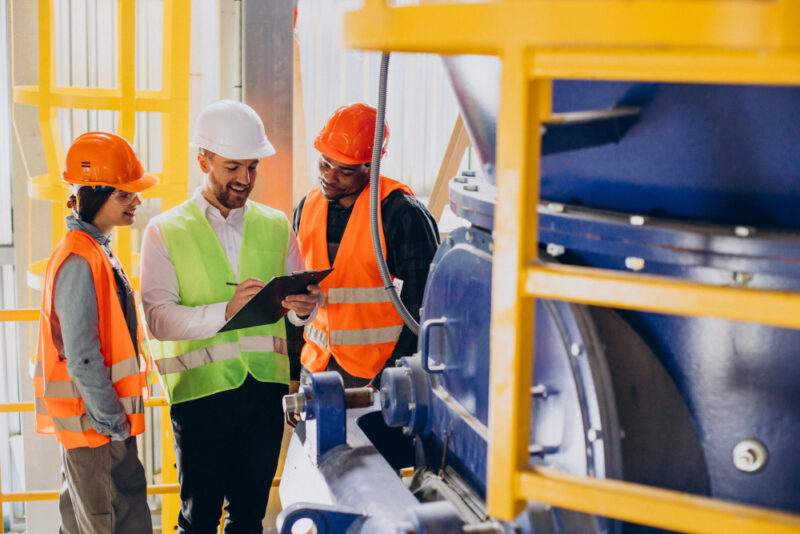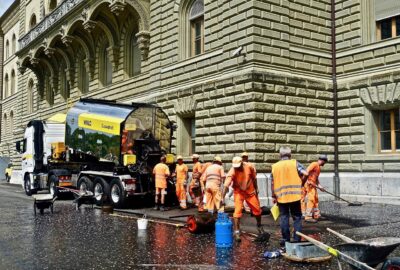There are over 628,000 manufacturing facilities in the United States; in fact, the country ranks 4th worldwide for manufacturing value added per capita to the economy. Aerospace, pharmaceuticals, food processing, and beauty products are major contributors to this enormous economic sector, though there are a variety of other, smaller industry segments, such as sporting goods, home decor, and clothing.
Every facility is different, specially designed for its intended purpose, but all share some important commonalities: the risk of serious injury through inadequate safeguards. The Bureau of Labor Statistics notes that there were over 373,000 nonfatal injuries in private manufacturing throughout the United States in 2020; tragically, 341 people lost their lives that year, and 2023 is expected to have a similar rate.
Proper safety protocols can have an enormous impact on the quality of your finished product and the well-being of your workers, which is why you must consider these hazards and how to avoid them.
Ward Away Machinery Injuries Through Proper Training and Controls
Large, intricate machines are necessary for mass production, but they also pose a significant danger to your workers. Hapless employees may suffer anything from a crushed foot to a broken arm; in some cases, they even die from injuries on the job.
For example, a Wisconsin worker at a 3M facility was killed after being caught in a plastic extruding machine’s rotating rollers while trying to clear a hazard. The Occupational Health and Safety Administration found that the company allowed employees to forego safety guards when trying to untangle stuck fibers or pick plastic off the floor, putting them at serious risk of entanglement and death.
Every machine has safeguards for a reason: much as they might annoy workers or hamper production, they are designed to protect employees from serious danger or death. As such, properly train your workers to never forego safety. Don’t allow safeguards, such as a lockout tag-out system, to be ignored or overridden to save a few minutes.
Poor Communication Is a Danger, Too
Many accidents occur because one employee fails to inform others of their intentions around malfunctioning equipment, such as going inside a machine only for it to be turned on while they are there. Teach your workers to tell at least two others when they intend to enter a restricted area; quickly and publicly reprimand those who fail to obey in order to reinforce this standard. Never let employees run a machine that is broken, especially if its flaw could result in entrapment or death. Fixing, sterilizing, or adjusting a machine should never come at the expense of a human life.
You may consider having a safety auditor regularly check employee compliance and suggest improvements in training.
Tamp Down on Fire Risk With Dust Collectors
Many manufacturing processes produce a great deal of particulates, whether that is iron shavings in a foundry or wood dust in a lumber yard, and these are often incredibly flammable. More than that, these contaminants can imperil the quality of the finished product, introducing impurities that could lead to lawsuits or injury to consumers.
The best way to prevent this is by installing a dust collector; for example, you may choose an woodworking dust collector for wood manufacturing facilities, which traps fine shavings to be disposed of. This keeps the air in the facility clean, reducing respiratory issues in workers and potential problems with quality control. You should work with a qualified manufacturer that custom designs a dust collector for your specific facility, as this will ensure it is suited to your needs and has the correct capacity for your production levels.
Prevent Heat Stroke With Adequate Ventilation
Warehouses, processing plants, and assembly lines can get incredibly hot: your employees are working in an enclosed space with heavy equipment that exudes its own heat. The Bureau of Labor Statistics notes that 36 employees in US factories died due to heat exposure in 2021; while this is lower than the 56 deaths in 2020, it still represents a serious concern to worker health and safety.
Proper ventilation and air conditioning are critical in every large facility, as is checking to see that it is actually cooling the area. Work with a qualified commercial air conditioning company to assess your current setup and perform regular maintenance.
The problem is particularly bad in places that use industrial ovens or work with superheated products, like ironworks or steel foundries, where additional care must be taken to ensure that employees are comfortable. You may want to invest in cooling vests or other personal cooling equipment that will protect workers.
Conclusion
Safety is an important factor in running a successful manufacturing plant, as it prevents lawsuits, ensures good quality control, and improves morale amongst your workers. Be proactive about safety rather than waiting for an accident to happen by partnering with great companies that deliver trusted solutions.
Work closely with your employees to ensure they’re well protected against respiratory hazards, crush injuries, and overheating. If your workers tell you that they’re having trouble breathing, feel uncomfortable around certain machines, or are overheating, believe them and work to rectify the situation immediately – you may just save a life.









